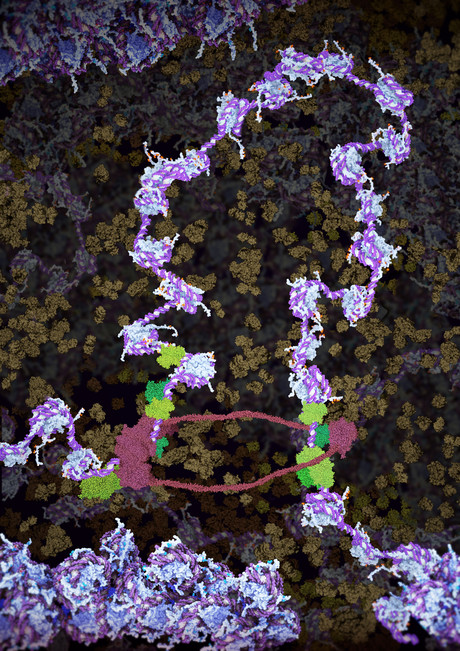The role of Pax5 in maintaining immune health

A protein called Pax5 helps to efficiently organise the genetic information (DNA) required for immune cells to maintain their form and function and help fight disease. This is according to a study by researchers at the Walter and Eliza Hall Institute of Medical Research (WEHI).
The findings also suggest that a breakdown in this process of organisation by Pax5 could increase the risk of diseases such as cancer.
The study, published in Nature Immunology, was led by Dr Rhys Allan and Dr Tim Johanson, in collaboration with Professor Stephen Nutt and bioinformaticians Professor Gordon Smyth and Dr Hannah Coughlan from WEHI.
Dr Johanson said the researchers had shown that Pax5 could sweep across the genome and fold, twist and store DNA for B cells in a fantastically ordered way — making each cell into what is like a jam-packed but very neat suitcase.
“This immaculate organisation is crucial because each cell contains roughly two metres of DNA — that’s a huge amount of material to fit inside something smaller than a grain of sand.
Dr Johanson said life depended on cells accessing what they needed, when they needed it.
“For instance, immune B cells must access the right information to produce potentially life-saving antibodies that are critical for vaccine and immune responses.
“Seemingly small errors in the process of DNA organisation can turn out to be very serious drivers for disease,” said Dr Allan.
“A lack of instructions required to function can put cells at risk of morphing or devolving into something they perhaps shouldn’t be — like a cancer cell. It is therefore unsurprising that Pax5 is faulty in many childhood leukaemias.”
Dr Coughlan said recent technological advances had allowed the teams to visualise Pax5’s activity across the genome for the first time.
“With the help of powerful computers, we performed thousands of complex calculations to spot the difference in DNA organisation when Pax5 was present, versus absent, from the B cells. Our analyses showed that without Pax5, the cells could no longer package their DNA adequately.
“Bioinformatics is shining a light on how vital factors regulate our DNA. This in turn progresses an understanding of what could be going wrong in cases of disease,” she said.
Dr Allan said the findings were particularly intriguing because for two decades Pax5 was known only as a ‘transcription factor’.
“Transcription factors help cells identify the instructions they need, but there was no evidence they could also play a part in the organisation and upkeep of this information, until now,” he said.
The research was supported by the Australian National Health and Medical Research Council, the Australian Research Council, the Victorian State Government and the Australian Government’s NHMRC Independent Research Institute Infrastructure Support scheme.
Pancreatic cancer hijacks metabolism switch to help it spread
Pancreatic cancer hijacks a molecule known for regulating physiological processes, such as food...
Novel antibiotic activates 'suicide' mechanism in superbug
Researchers have discovered a new class of antibiotic that selectively targets Neisseria...
Modifications in the placenta linked to psychiatric disorders
Schizophrenia, bipolar disorder and major depression disorder are the neuropsychiatric disorders...




